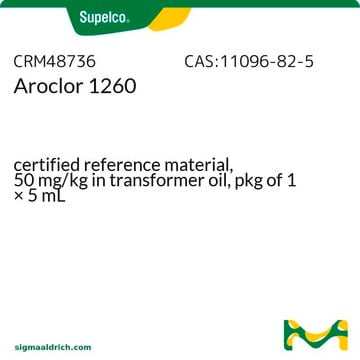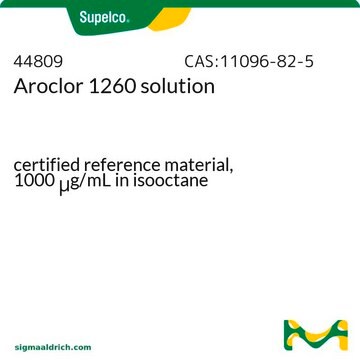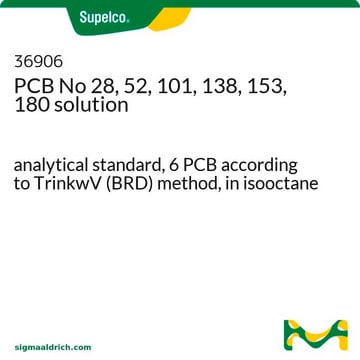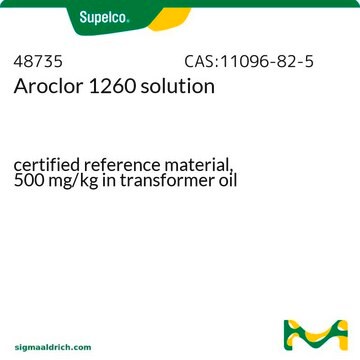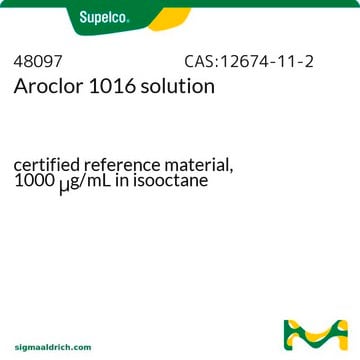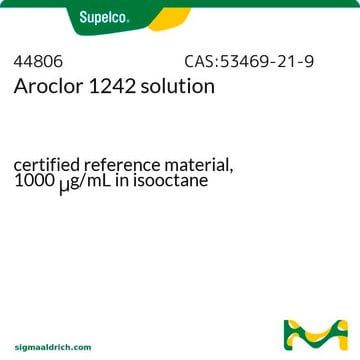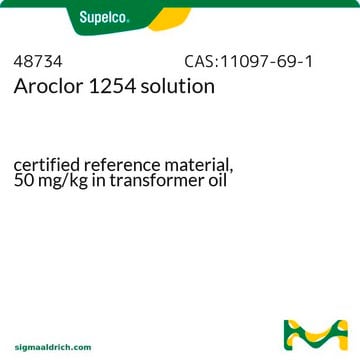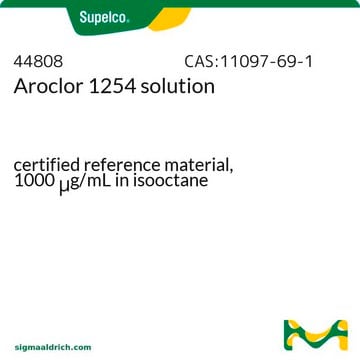90128R
Aroclor 1254 solution
1000 μg/mL in hexane, analytical standard
About This Item
Recommended Products
grade
analytical standard
packaging
ampule of 1 mL
concentration
1000 μg/mL in hexane
technique(s)
HPLC: suitable
gas chromatography (GC): suitable
application(s)
environmental
format
single component solution
storage temp.
room temp
InChI
1S/C12H5Cl5/c13-8-3-1-2-6(10(8)15)7-4-5-9(14)12(17)11(7)16/h1-5H
InChI key
AUGNBQPSMWGAJE-UHFFFAOYSA-N
Looking for similar products? Visit Product Comparison Guide
Application
Legal Information
signalword
Danger
Hazard Classifications
Aquatic Acute 1 - Aquatic Chronic 1 - Asp. Tox. 1 - Flam. Liq. 2 - Repr. 2 - Skin Irrit. 2 - STOT RE 2 - STOT RE 2 Inhalation - STOT SE 3
target_organs
Central nervous system, Nervous system
Storage Class
3 - Flammable liquids
wgk_germany
WGK 3
flash_point_f
-14.8 °F - closed cup
flash_point_c
-26 °C - closed cup
ppe
Eyeshields, Faceshields, Gloves, type ABEK (EN14387) respirator filter
Choose from one of the most recent versions:
Certificates of Analysis (COA)
Sorry, we don't have COAs for this product available online at this time.
If you need assistance, please contact Customer Support.
Already Own This Product?
Find documentation for the products that you have recently purchased in the Document Library.
Our team of scientists has experience in all areas of research including Life Science, Material Science, Chemical Synthesis, Chromatography, Analytical and many others.
Contact Technical Service